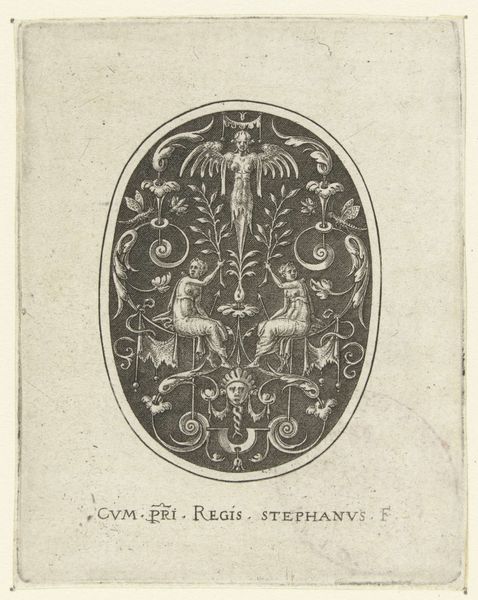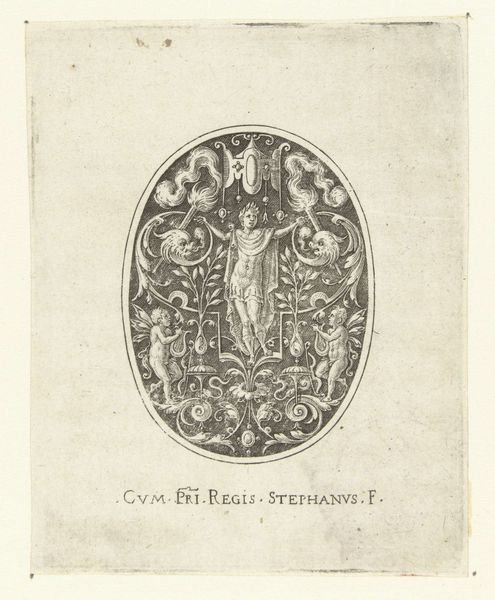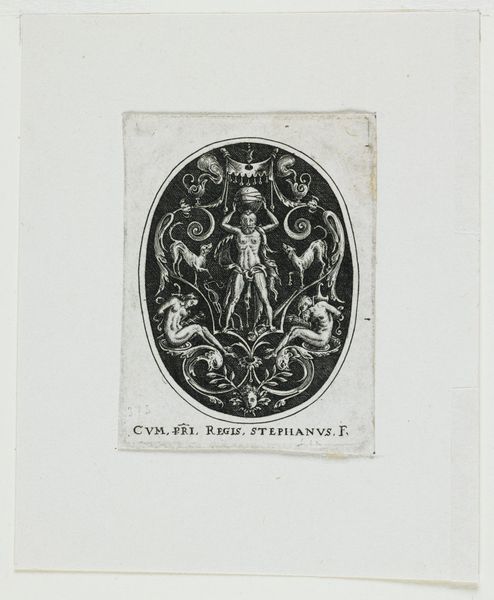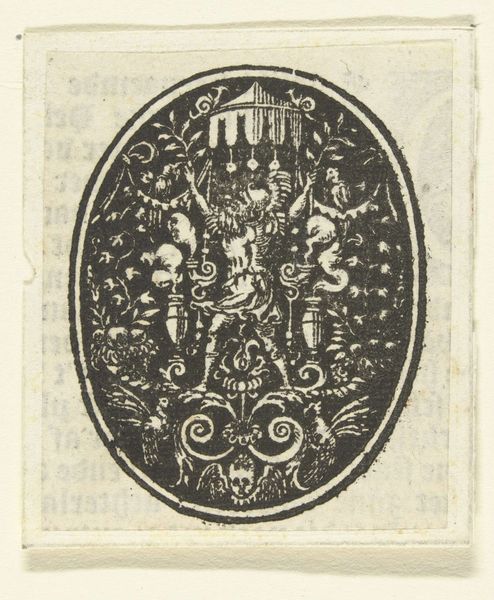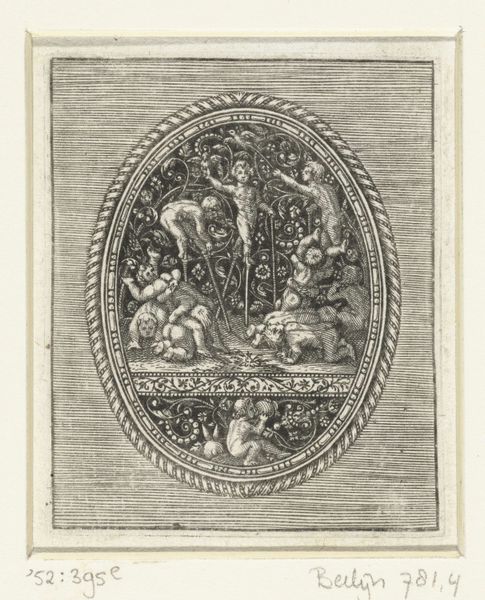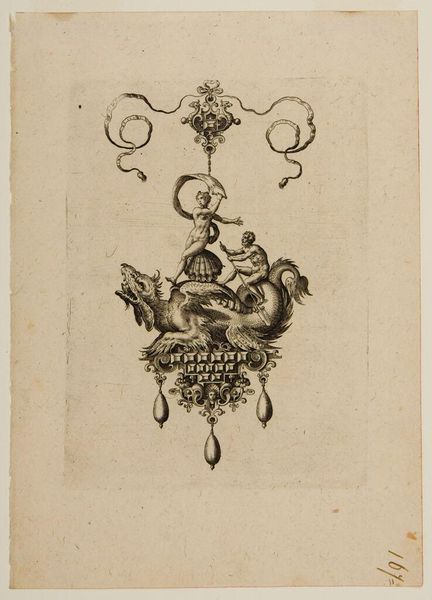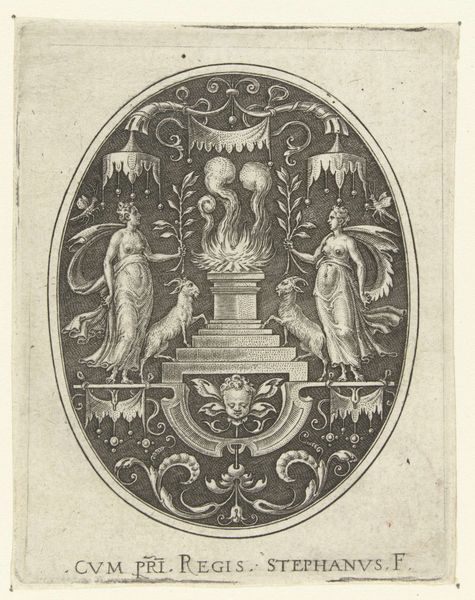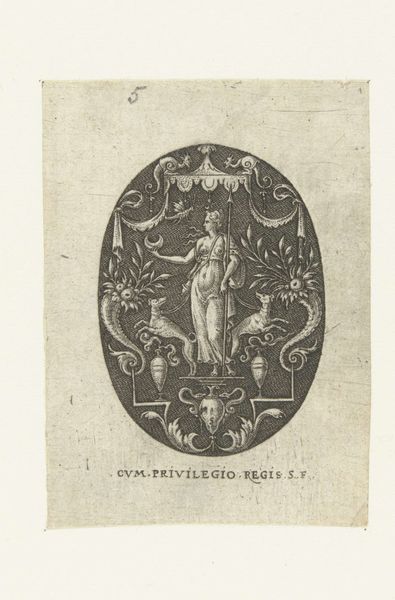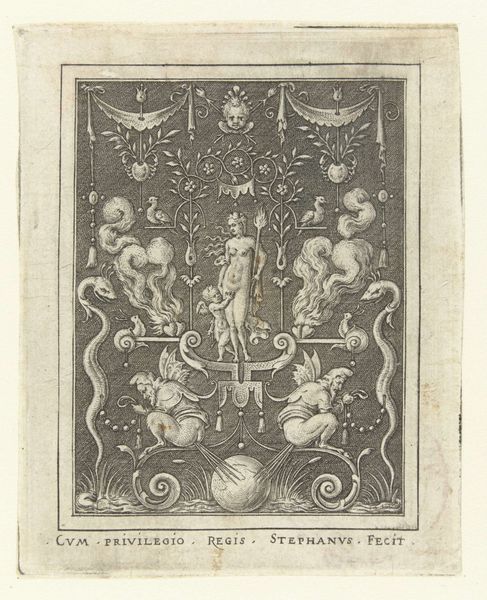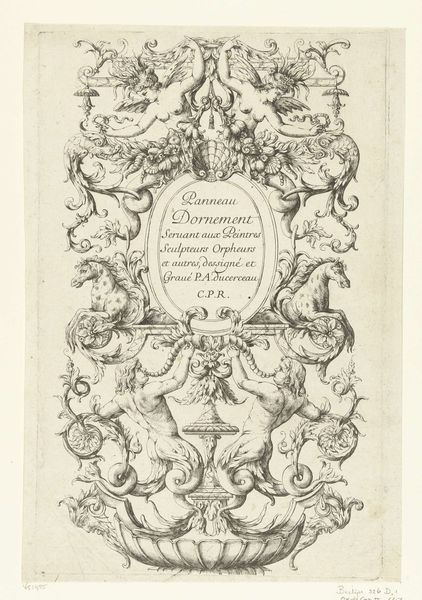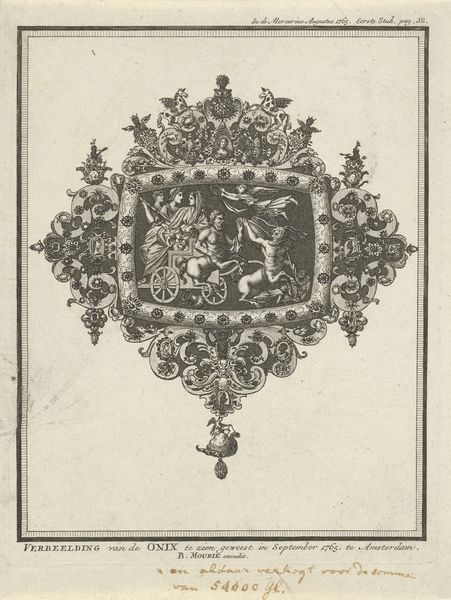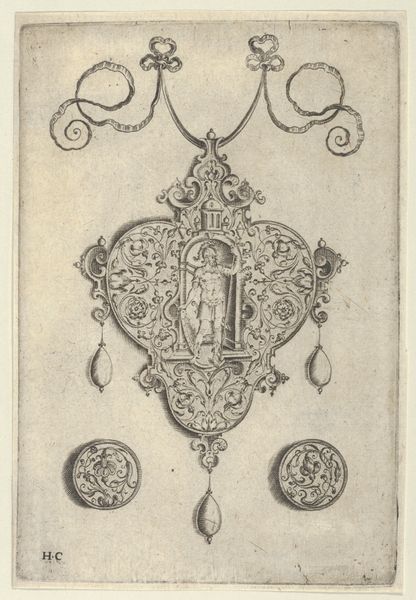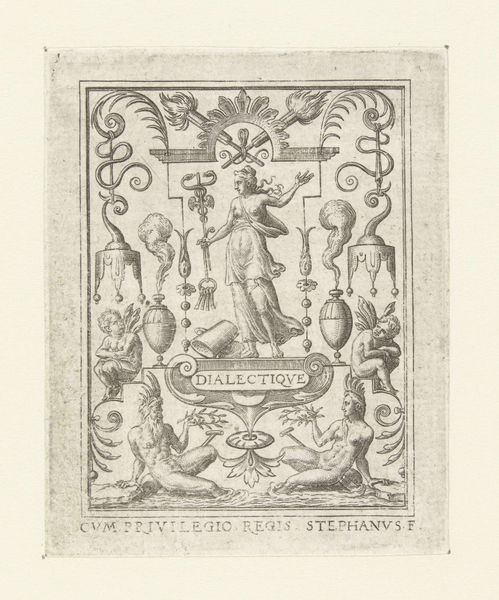
print, engraving
#
allegory
# print
#
old engraving style
#
mannerism
#
figuration
#
line
#
history-painting
#
engraving
Dimensions: height 82 mm, width 63 mm
Copyright: Rijks Museum: Open Domain
Curator: This print, residing here at the Rijksmuseum, is entitled "Mars onder een baldakijn," or "Mars Under a Canopy," attributed to Etienne Delaune, dating from 1528 to 1583. Editor: The fine lines of the engraving are immediately striking. There's a strange tension between the delicacy of the ornamentation and the rather imposing figure of Mars himself. Curator: It's intriguing, isn't it? Delaune worked as a goldsmith and medalist, and you see this craft skill translating beautifully into his prints. The focus on line work—the dense crosshatching used to create shadow—really speaks to the labor involved in producing this image. Editor: Absolutely, and think about how prints like this circulated. They were vital visual information networks, influencing taste and disseminating ideas across Europe, playing a key role in the visual culture and the politics of imagery during the Renaissance. Did ownership of works such as these project cultural status, influence? Curator: Undeniably. Consider how Delaune became a Huguenot and eventually fled persecution, finding work as a die-cutter for coinage. His skillset, that handwork with metals, directly fueled his survival. How class, skill, and material culture interplay, yes? This allowed his images to have wide societal distribution and reach. Editor: Looking closely, one has to wonder about this specific Mars. The canopy above, the theatricality, the decorative program that places emphasis around the oval vignette all speak to Mannerism sensibilities. The work's formal structure places the eye on the divine human. This all is not an unusual method for glorification during that specific timeframe in European history. It raises the question of how such figures were strategically projected by, or in the interest of, ruling authorities at the time. Curator: I agree. I look at how that image has endured over time. It makes me ponder its creation in a world driven by power, status, faith, craft, tools and dissemination through print. Editor: Well, considering the context you’ve presented, this detailed image opens our minds to consider both artistic mastery, but also sociopolitical factors at the core of artistic development.
Comments
No comments
Be the first to comment and join the conversation on the ultimate creative platform.
